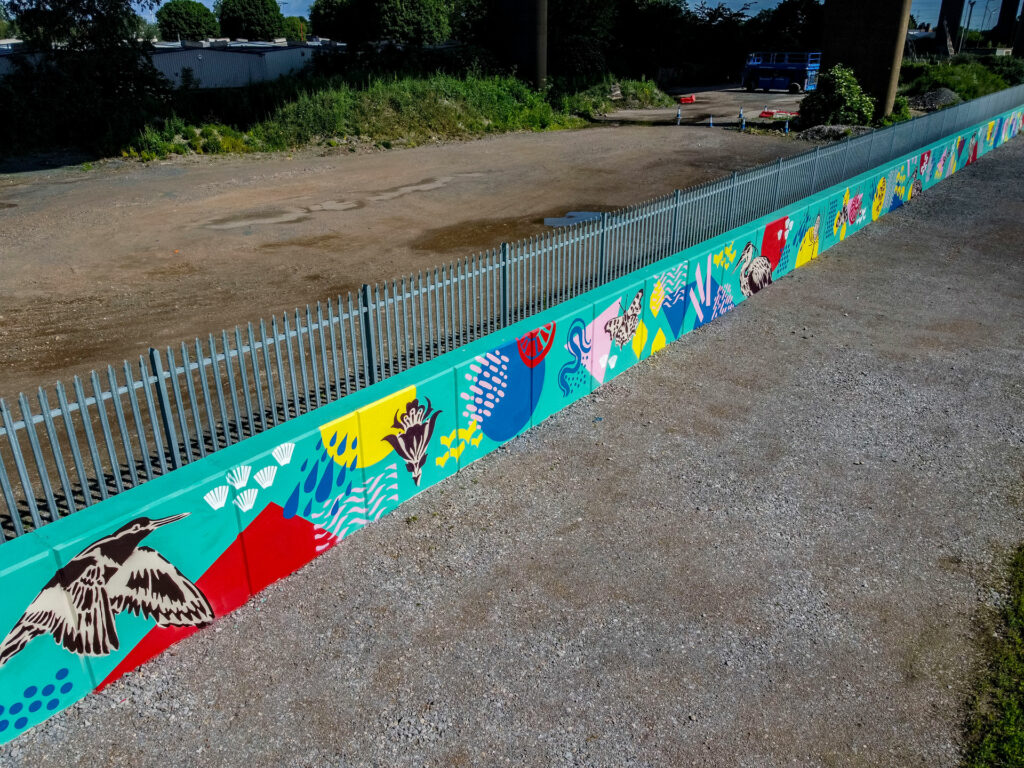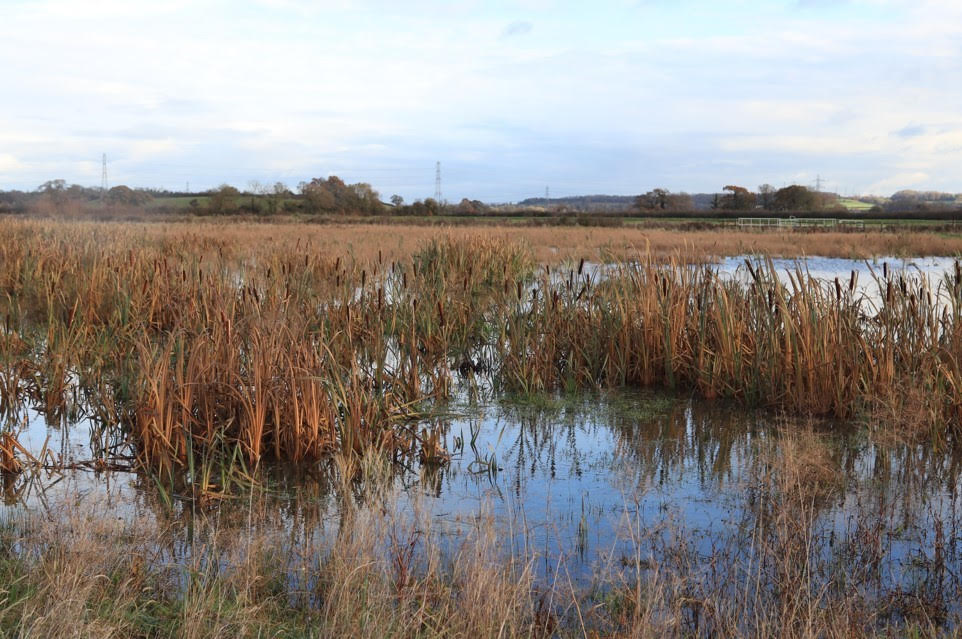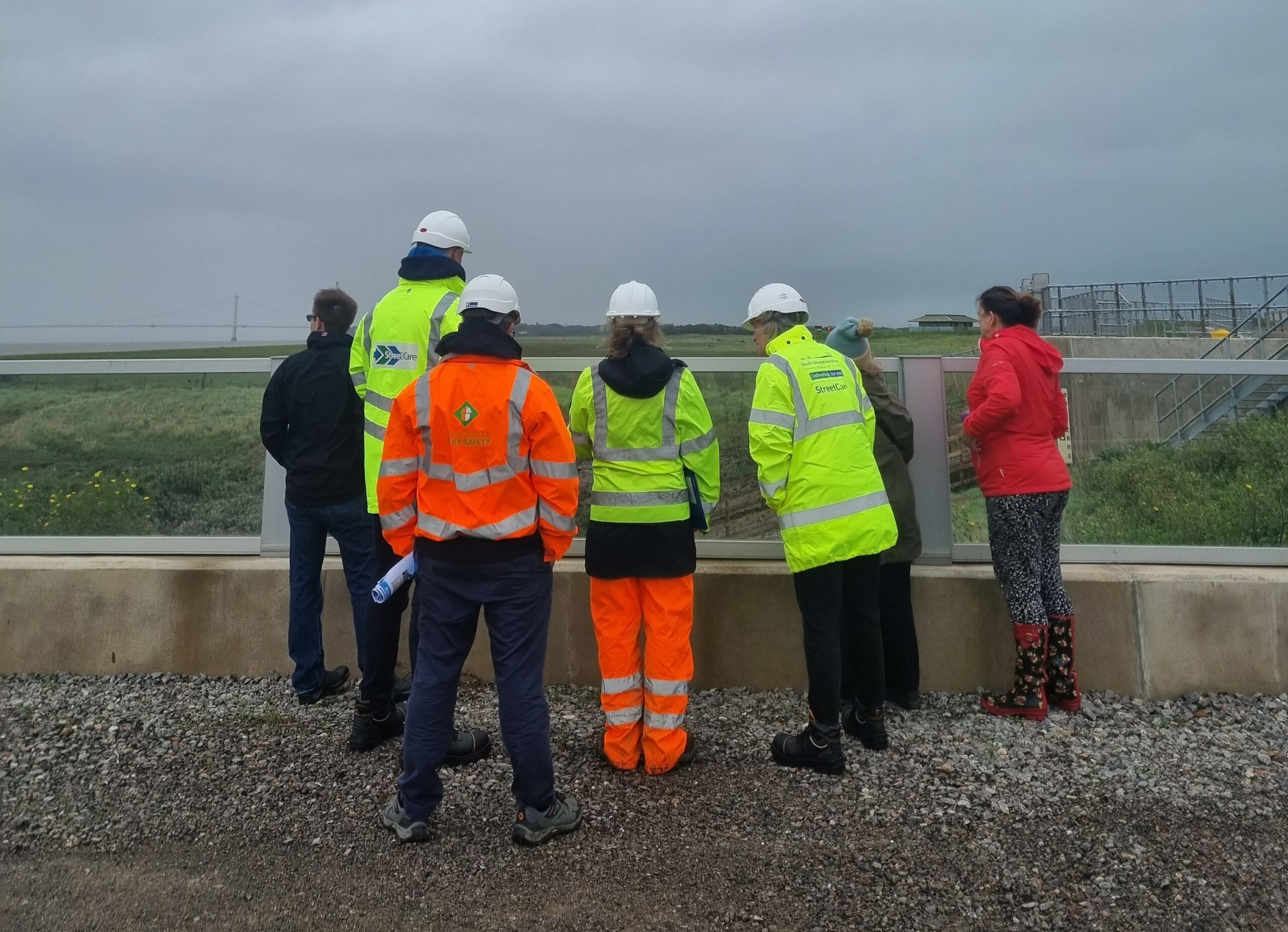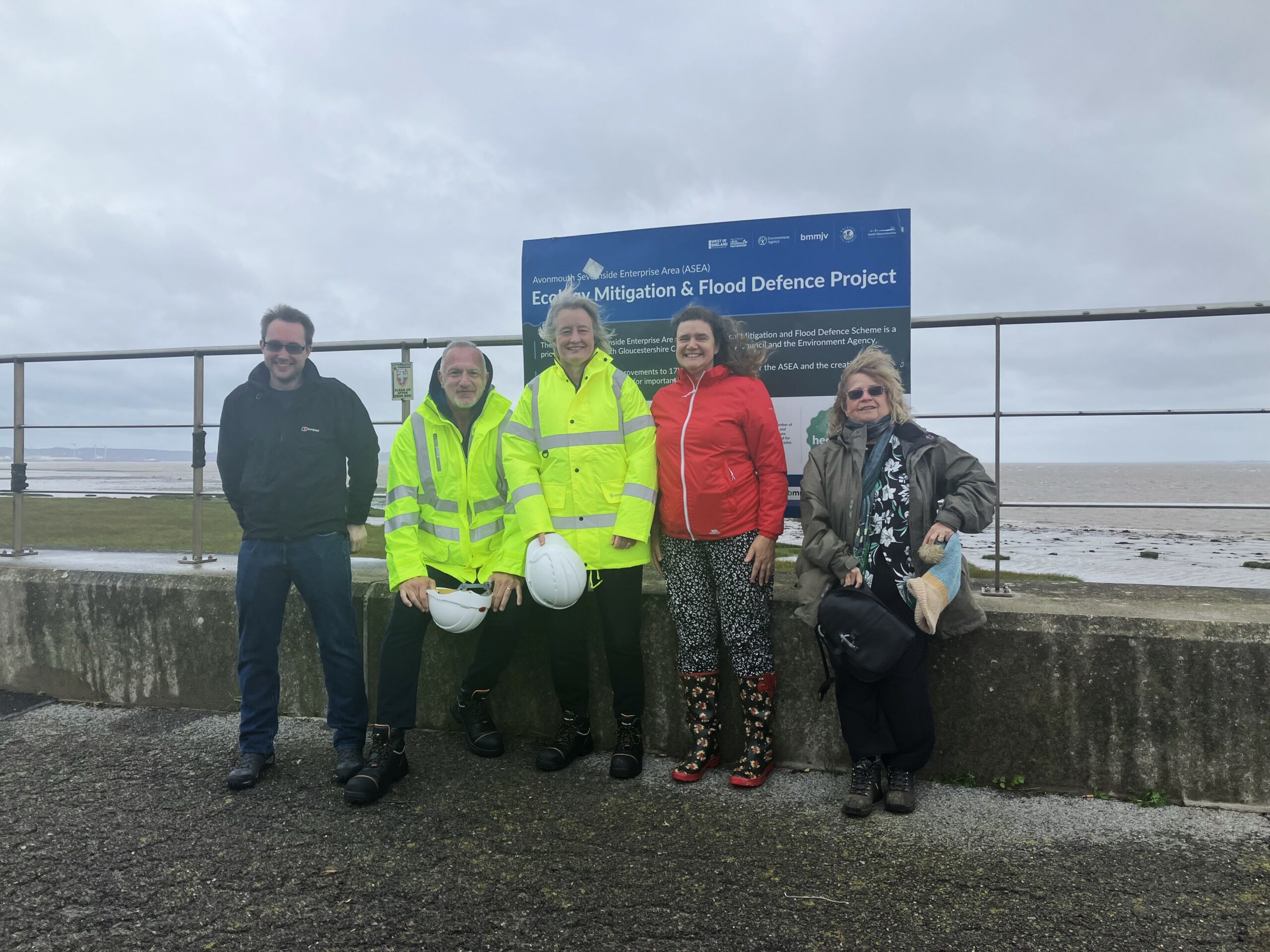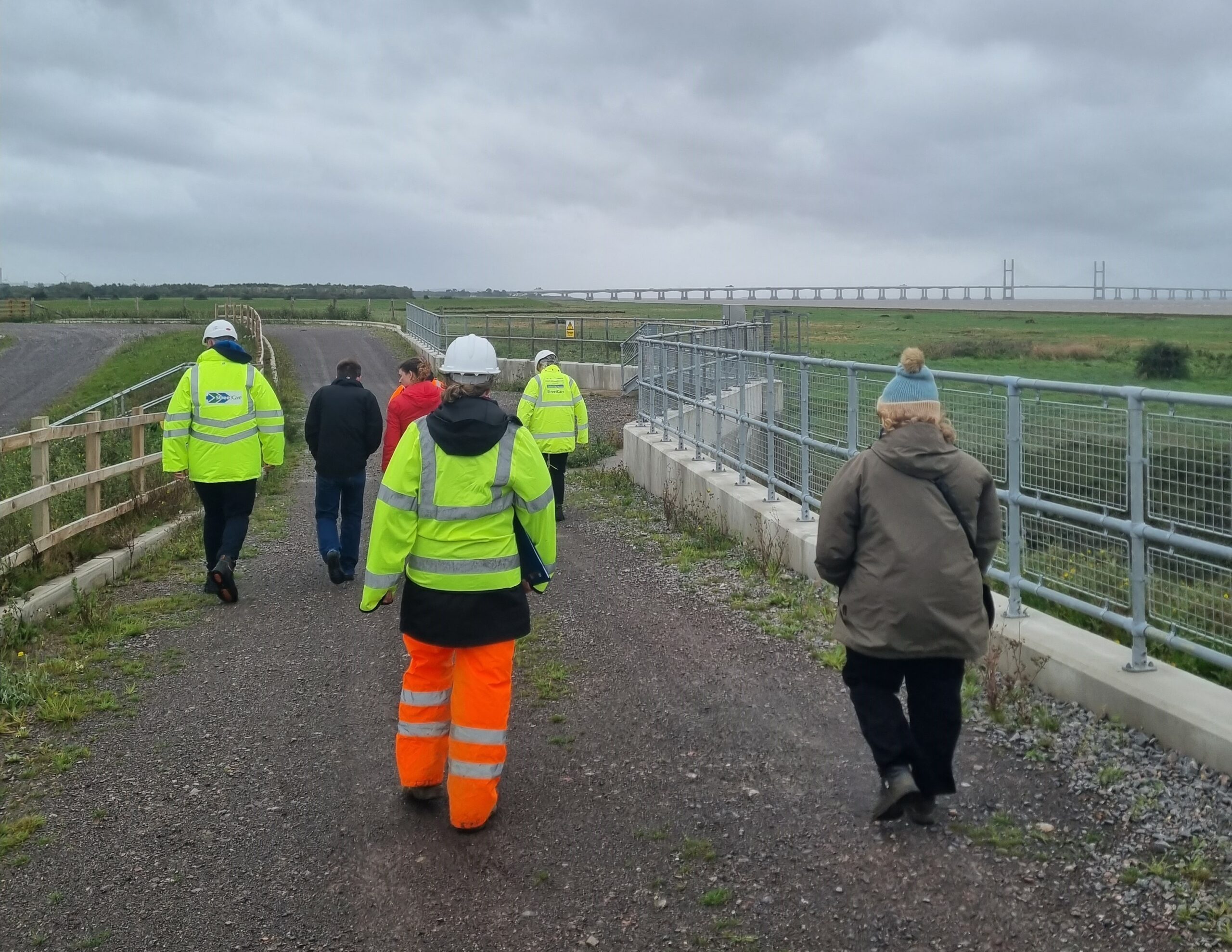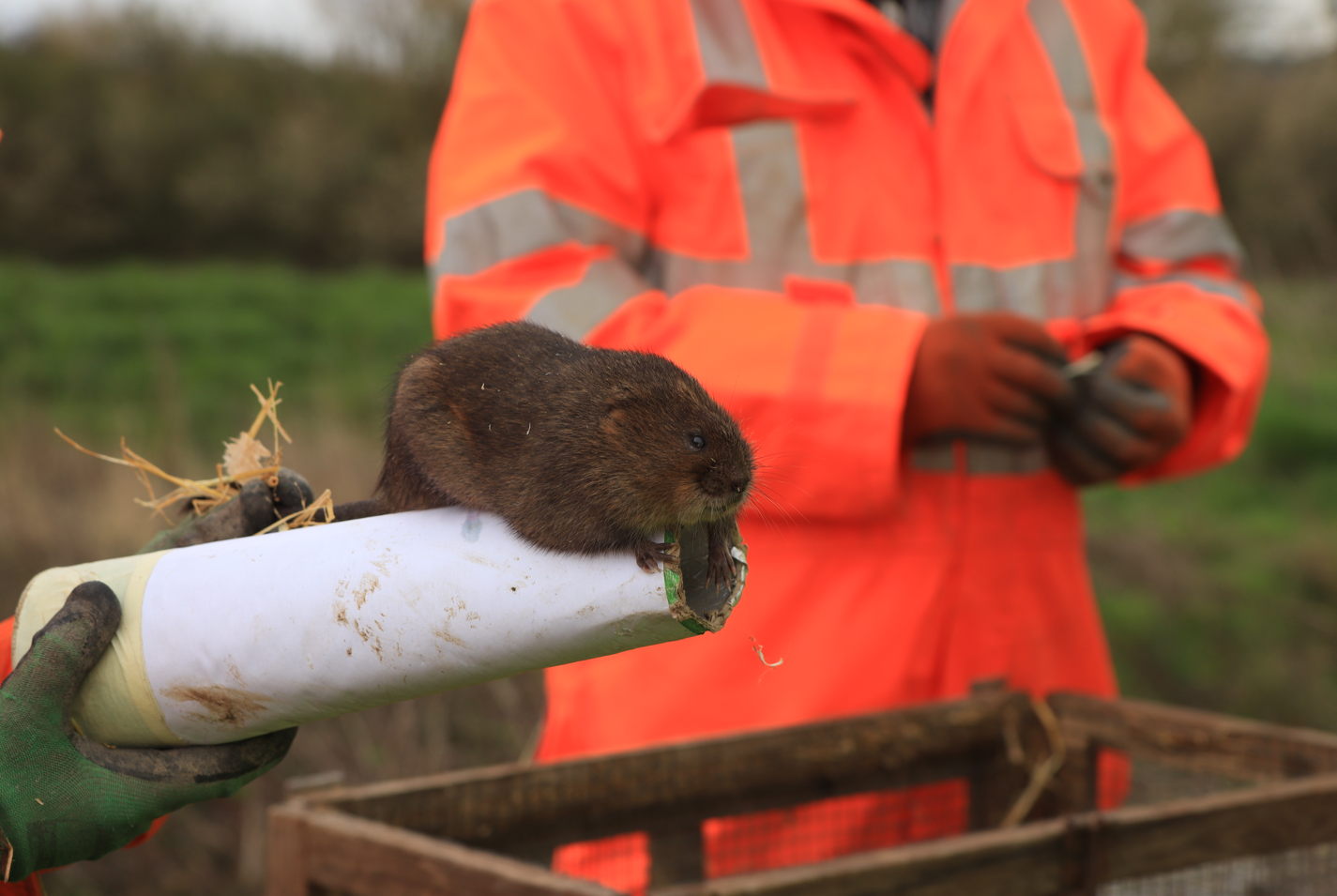We have made improvements to the Kings Weston Outfall in Bristol to stop tidal water entering the local drainage system. The team has replaced old flap valves with new tide valves, with a 100-tonne crane lifting the new valves into position. The work is part of improvements to several outfalls throughout the ASEA project area.
The new tidal flap valves are a combination of stainless steel and high-density polyethylene.
Tide valves ensure water can pass through valves in one direction only. Water flows through a pipe or culvert and pushes the swinging door open. When the water level on the downstream side of the flap valve is higher than in the pipe or culvert, it presses the swinging door shut and prevents the water traveling back through the system.
The existing concrete structure at Kings Weston Outfall was in a poor condition so the design for the new flap valves includes a large spreader plate to transfer load throughout the structure rather than point load the face.
The team has also repaired the existing stonework face to ensure a secure fit and is installing new winch systems that will allow the flap valves to be safely lifted for access for future maintenance and inspection.
As well as this work, it is refurbishing the existing steps down to the spillway and constructing a new concrete access ramp and stairs that will give access to the foreshore for plant to carry out maintenance works and clear silt for the spillway. The new works will be protected by approximately 1800 tonnes of new rock armour that is now in place.
Mitchells Salt, Holes Mouth, Stupp Pill, Cake Pill, Chestle Pill, Cotteralls Pill and New Pill outfall structures are also being improved. The team is raising the height of outfalls there in-line with new flood defences. In many cases, it is also widening the outfalls to support the extra load to support this increased height.
Councillor Nicola Beech, Cabinet Member with responsibility for Strategic Planning, Resilience and Floods, Bristol City Council, said: “I’m incredibly pleased with the progress being made on this ambitious project where we are getting on with making improvements to our flood defences. The new tide valves will help to stop tidal water entering the local drainage system, protecting the local community and wildlife from flooding in the future.
“Flooding represents one of the major threats to the region and as a maritime city, we are particularly at risk from the effects of flood events. As a council, we’re investing over £40 million in our flood defences and our administration has worked with partners across sectors to source investment and undertake the action necessary to protect the city, unlock new opportunities for housebuilding and commercial operations.”
Ursula Stevenson, Client Lead for the project, said: “Outfall improvements are a very important part of the project. Efficient flap valves make a big difference to keeping local drainage systems safe rather than underwhelmed.”
Delivered in a unique partnership between South Gloucestershire and Bristol City Councils with the Environment Agency, the ASEA project is protecting communities and wildlife against anticipated rising sea levels and will unlock economic growth. When complete in 2026, it will provide 17km of flood defences from Aust in South Gloucestershire to Shirehampton in Bristol. These will reduce flood risk to 2,500 homes and businesses and help unlock 1,200 new jobs. The project will also create a minimum of 80ha of new wetlands habitat.




